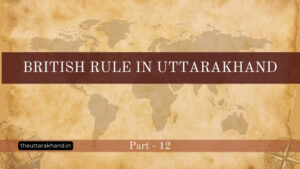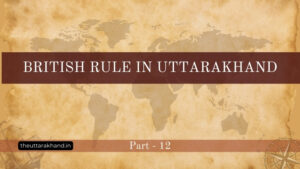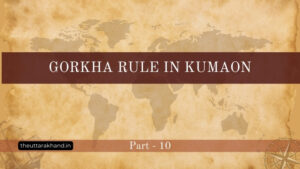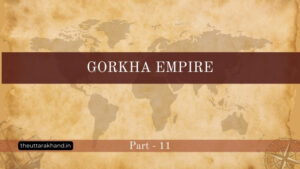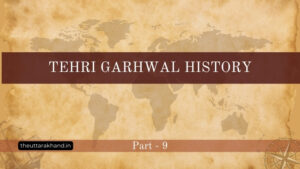Gorkha Empire
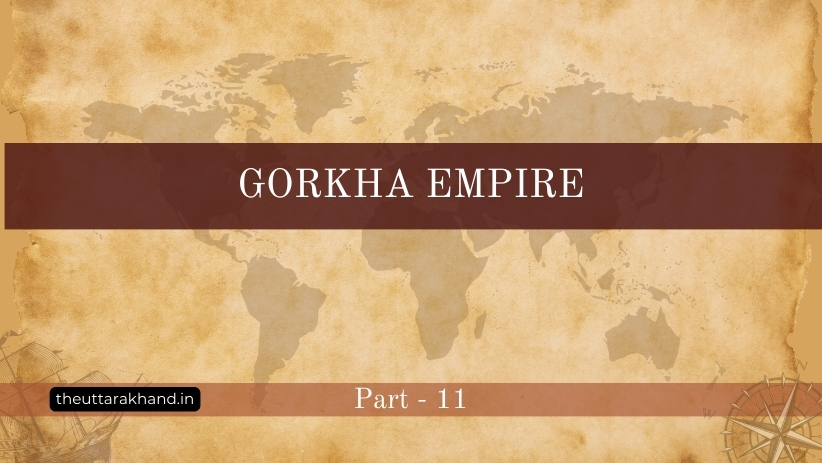
Gorkha Empire
Table of contents
I. Introduction to Gorkha Empire
A. Background Information on the Gorkha Empire
The Gorkha Empire emerged in the mid-18th century when King Prithvi Narayan Shah united various petty principalities in the western part of Nepal. Under his visionary leadership, the empire rapidly expanded, incorporating diverse cultures, languages, and geographical terrains into one unified state. By the late 18th century, the Gorkha Empire encompassed not just present-day Nepal but also portions of northern India, stretching from Sikkim in the east to Garhwal in the west.
B. Purpose and Scope of the Presentation
This article aims to provide a concise yet engaging overview of the establishment and expansion of the Gorkha Empire, focusing on the founder, military campaigns, and territorial acquisitions. Through vivid descriptions and intriguing facts, readers will gain valuable insights into how a once obscure kingdom transformed into a powerful regional force.
II. Establishment and Expansion of the Gorkha Empire
A. Founder: King Prithvi Narayan Shah
King Prithvi Narayan Shah ascended the throne at the age of twenty-two in 1742 CE. From an early age, he demonstrated exceptional strategic acumen and charismatic leadership skills. Recognizing the potential for growth beyond Gorkha’s narrow borders, Shah embarked on ambitious plans to expand his realm, eventually establishing what would become known as the Gorkha Empire.
B. Military Campaigns and Conquest Strategies
To achieve his goals, Shah employed innovative tactics and formidable military might. His forces relied heavily on infantry units armed with traditional weapons such as khukuri knives and matchlock guns. Additionally, Shah fostered strong alliances among neighboring states, leveraging these relationships to further strengthen his position.
One notable aspect of Shah’s strategy involved targeting vulnerable hillforts while avoiding direct confrontations with larger armies. Once control over these fortifications was secured, Shah could consolidate resources and launch additional offensives against adjacent territories. In essence, he utilized guerrilla warfare techniques centuries before they became widely recognized as effective military tactics.
C. Territories Acquired During Expansion
During the reign of King Prithvi Narayan Shah, the Gorkha Empire experienced rapid growth, absorbing numerous neighboring kingdoms along the way. Among them were Nuwakot, Makawanpur, Kathmandu Valley, and Kirtipur – critical bastions guarding access to lucrative trade routes connecting Tibet and India. After Shah’s death in 1775 CE, his successors continued expanding the empire, adding vast tracts of land in present-day Uttarakhand, Himachal Pradesh, and Sikkim.
By the turn of the 19th century, the Gorkha Empire stretched across nearly 115,000 square miles, making it one of South Asia’s most expansive empires. Despite facing challenges from both internal dissent and external threats, the Gorkha rulers maintained relative stability throughout their domain, earning respect and admiration from friends and foes alike.
III. Administrative Structure and Governance
A. Centralized Government with a Feudal Hierarchy
- Raja (King)
At the helm of the Gorkha Empire stood the revered figure of the Raja or King. As both spiritual leader and temporal sovereign, the Raja wielded absolute power over matters ranging from religious observances to foreign policy decisions. Subjects regarded him as divinely ordained, granting him near-unquestioned authority within the confines of his dominion.
- Council of Ministers (Mantri Mandala)
Assisting the Raja in managing the sprawling empire were four primary advisors collectively referred to as the Mantri Mandala. Each member held distinct responsibilities crucial to maintaining order and prosperity throughout the realm.
a. Diwan (Prime Minister)
As chief executive officer, the Diwan oversaw daily operations, coordinating efforts among various departments and ensuring seamless integration of provincial administrations. Moreover, he acted as intermediary between the Raja and other high-ranking officials, facilitating open lines of communication essential for efficient governance.
b. Wajir (Chief Advisor)
Tasked with providing counsel on domestic and international issues, the Wajir played a vital role in shaping long-term strategic objectives. Drawing upon extensive knowledge gleaned from years of experience, he guided the Raja through complex negotiations, mediated disputes among vassals, and offered sage advice on pressing concerns affecting the welfare of the empire.
c. Fauzdar (Military Commander)
Overseeing military affairs fell to the capable hands of the Fauzdar, who commanded respect from seasoned warriors and green recruits alike. Responsible for organizing training exercises, equipping soldiers with necessary gear, and devising battle strategies, the Fauzdar ensured that the Gorkha army remained a potent fighting force feared by adversaries and admired by allies.
d. Naggi (Revenue Collector)
Lastly, the resourceful Naggi served as treasurer, supervising financial transactions and assessing taxes levied on subjects dwelling within the empire’s boundaries. Utilizing meticulous record-keeping practices, he safeguarded the fiscal health of the realm, enabling the Raja to fund public works projects, maintain infrastructure, and support lavish ceremonies befitting royal stature.
- Local Governance: Village Panchayats and Thokdars
Decentralization formed an integral component of the Gorkha administrative framework. At the grassroots level, self-governing bodies known as Village Panchayats exercised jurisdiction over local matters. These councils typically comprised five esteemed elders chosen for their wisdom, integrity, and impartiality. Together, they adjudicated civil disagreements, administered justice, allocated natural resources, and promoted communal harmony.
Complementing the Panchayats were Thokdars—designated leaders appointed by higher authorities to represent specific villages or neighborhoods. Acting as liaisons between common folk and ruling aristocracy, Thokdars relayed concerns, disseminated edicts, collected revenues, and mobilized manpower when required. Their presence bridged gaps between disparate groups, fostering cohesiveness amidst heterogeneous populations.
B. Legal System and Justice Administration
- Courts and Judges
Within the Gorkha Empire, courts functioned as formal venues wherein litigants presented cases involving personal injury, property disputes, breaches of contract, and criminal activity. Judicial proceedings adhered strictly to prescribed procedures designed to ensure fairness and transparency. Judges presided over trials, interrogating parties, examining evidence, and rendering verdicts grounded in irrefutable logic.
- Types of Crimes and Corresponding Punishments
Crimes varied considerably depending on severity and context. Offenses classified as serious often warranted severe consequences, such as amputation, blinding, or execution. Lesser misdeeds merited milder sanctions, including fines, incarceration, or public humiliation. Regardless of gravity, every crime necessitated thorough investigation, thoughtful deliberation, and equitable resolution.
- Role of Witnesses and Oath-Taking
Testimony provided by credible witnesses significantly influenced judicial outcomes. To encourage honesty, those summoned to testify swore sacred oaths invoking divine retribution should they perjure themselves. Such solemn affirmations underscored the importance of truthfulness within legal proceedings, bolstering confidence in judgments rendered by impartial arbiters.
Throughout its storied existence, the Gorkha Empire evolved into a sophisticated entity characterized by well-defined hierarchical structures, robust institutions, and nuanced jurisprudence. Its remarkable resilience stemmed partially from adaptability, allowing it to flourish despite encroachment by rival powers seeking to undermine its sovereignty. Ultimately, the Gorkha Empire bequeathed a lasting legacy inspiring generations of proud descendants committed to preserving their cherished heritage.
IV. Economic Policies and Revenue Collection
A. Land Tenure and Taxation Systems
Land ownership constituted a cornerstone of the Gorkha economy. Agricultural productivity fueled commercial activities, generating wealth for both peasants and aristocrats. Two predominant forms of landholding existed: Jagirs and Khals.
Jagirs represented estates granted to loyal retainers or bureaucrats in exchange for services rendered to the crown. These grants conveyed rights to collect rents, taxes, and fees from cultivators inhabiting designated plots. Over time, jagirdars amassed considerable influence, occasionally challenging royal prerogatives.
Conversely, Khals signified lands owned directly by the state or controlled by temples, monasteries, and other religious institutions. Assigned cultivators paid fixed taxes to maintain irrigation networks, roads, and public facilities. Notably, certain communities enjoyed exemptions from taxation due to their status as priests, artisans, or soldiers.
B. Trade and Commerce Regulations
International trade occupied a prominent place within the Gorkha Empire’s economic fabric. Key commodities exchanged included cotton textiles, sugar, spices, salt, precious stones, timber, wool, and metalware. Customs duties imposed on imported goods generated substantial revenue for the treasury.
Entrepôts strategically located along major transit corridors attracted merchants hailing from distant realms. Towns such as Bhaktapur, Patan, and Banepa thrived on commercial ventures, hosting bustling markets teeming with buyers and sellers negotiating deals. Marketplaces operated according to strict guidelines stipulating hours of operation, quality standards, and pricing mechanisms.
C. Currency and Monetary Policies
Coins struck during the Gorkha era bore distinctive designs reflecting regional affiliations and historical epochs. Copper, silver, and gold denominations circulated freely, serving as mediums of exchange, storehouses of value, and measures of account. Counterfeit coins faced harsh penalties, discouraging fraudulent activities detrimental to market stability.
V. Social Hierarchy and Cultural Practices
A. Castes and Social Stratification
Hierarchical caste distinctions shaped social interactions among Gorkha denizens. Four primary varnas—Brahmins, Kshatriyas, Vaishyas, and Shudras—denoted broad occupational categories determining individual standing within society. Intermarriage between castes occurred rarely, reinforcing rigid barriers separating insular groupings.
Nevertheless, exceptions punctuated this otherwise static arrangement. For instance, accomplished individuals transcending conventional roles sometimes garnered recognition outside their assigned varna. Similarly, affluent merchant families occasionally elevated their caste status via generous donations supporting religious causes.
B. Religion and Festivals
Hinduism dominated the religious landscape, although Buddhist influences persisted among Newar communities populating urban centers. Polytheistic traditions emphasizing multiple deities coexisted alongside animist beliefs attributing spirits to natural phenomena. Ancestor worship constituted another prevalent practice, honoring forebearers deemed instrumental in securing blessings and protection.
Myriad festivals animated the calendar year, celebrating life milestones, agricultural cycles, and celestial events. Popular occasions included Dashain, Tihar, Holi, and Indrajatra, featuring processions, music, dance, food offerings, and gift-giving rituals. Communal gatherings nurtured solidarity among participants, reaffirming shared values and promoting conviviality.
C. Art, Architecture, and Literature
Rich artistic traditions manifested in various media, showcasing mastery of painting, sculpture, metallurgy, textile production, and woodworking. Epic narratives recounting heroic tales frequently adorned temple walls, palace facades, and manuscript illustrations. Natural motifs inspired by flora and fauna abounded, symbolizing fertility, abundance, and cosmic balance.
Architectural marvels graced cities, towns, and hamlets scattered throughout the empire. Stone masonry, brickwork, and timber construction exemplified indigenous craftsmanship, yielding iconic edifices renowned for harmonious proportions, intricate carvings, and vibrant colors. Sacred sites dedicated to Hindu and Buddhist divinities featured prominently among architectural legacies, attesting to syncretic tendencies inherent in Gorkha culture.
Literary achievements ranged from epic poetry to didactic texts expounding philosophical principles. Classics authored during this era include the Mahabharata, Ramayana, and Bhagavad Gita, still revered today for their profound insights and literary elegance. Scholarly pursuits extended to astronomy, mathematics, medicine, and law, culminating in voluminous compendiums documenting accumulated knowledge.
VI. Decline and Fall of the Gorkha Empire
A. Conflicts with the British East India Company
The burgeoning British presence in India inevitably led to friction with the Gorkha Empire. Ambitious expansionist agendas collided, igniting hostilities that would shape the fate of the entire region.
Initially, contacts between the two entities proved cordial, even cooperative. Amicable relations enabled trade, cultural exchange, and mutual assistance against common adversaries. However, mounting tension accompanied escalating ambition as each side jostled for advantage.
Key flashpoints included disputes over territorial boundaries, trading privileges, and military interference. Skirmishes along frontiers intensified, prompting belligerents to adopt increasingly aggressive postures. Eventually, full-scale conflict erupted, irreparably damaging prospects for reconciliation.
B. Anglo-Gorkha War (1814-1816)
The Anglo-Gorkha War marked a turning point in the history of the Subcontinent. Lasting from 1814 to 1816, this brutal struggle pitted the technologically superior forces of the British East India Company against the determined resistance of the Gorkha Army.
Despite initial setbacks, the Gorkhas displayed remarkable valor and ingenuity. Guerrilla tactics favored rugged terrain, neutralizing some advantages afforded by European weaponry and discipline. Nevertheless, overwhelming firepower and logistical prowess gradually wore down defiant opponents.
Eventually, decisive victories at Malaun and Kalunga sealed the outcome. Weakened by attrition and desertion, demoralized Gorkha troops conceded defeat, opening the door for unfavorable terms dictated by triumphant adversaries.
C. Treaty of Sugauli and Implications for the Gorkha Empire
Negotiations following the Anglo-Gorkha War resulted in the Treaty of Sugauli, signed on December 2, 1815. Stipulations included ceding large swaths of territory to the British, abandoning claims on neighboring states, reducing military capabilities, and accepting resident commissioners tasked with monitoring compliance.
These concessions fundamentally altered the geopolitical landscape, diminishing the Gorkha Empire’s prestige and influence. Furthermore, loss of ancestral domains sparked outrage among dispossessed subjects, fueling resentment toward erstwhile overlords perceived as having capitulated too readily.
VII. Conclusion
A. Legacy and Impact of the Gorkha Empire
Despite its eventual collapse, the Gorkha Empire left an indelible mark on South Asian history. Innovative governance, vigorous expansion, and cultural synthesis distinguished it from contemporaneous regimes.
Noteworthy accomplishments encompassed standardizing weights and measures, codifying laws, developing hydropower, constructing monumental architecture, patronizing arts and letters, integrating diverse peoples, and defending national sovereignty. Indeed, remnants of these endeavors remain visible today, bearing witness to past glories.
Moreover, the Gorkha spirit continues inspiring future generations, instilling pride in collective identity and fostering aspirations for autonomy. Political movements championing self-determination frequently invoke the memory of legendary ancestors who carved out a nation from seemingly insurmountable odds.
B. Reflection on Strengths and Weaknesses of the Imperial System
Like any human institution, the Gorkha Empire exhibited both commendable attributes and shortcomings. On one hand, centralized authority facilitated swift decision-making, efficient resource allocation, and consistent enforcement of norms. On the other, authoritarian rule engendered corruption, nepotism, and opposition suppression.
Similarly, militaristic prowess buttressed territorial gains and deterred enemies but exacted heavy tolls on soldiers and civilians alike. Meanwhile, isolationist tendencies hindered technological advancement and exposed vulnerabilities to external aggression.
C. Importance of Understanding History for Contemporary Society
Studying history offers invaluable lessons applicable to contemporary societies grappling with similar challenges. Insights gained from analyzing past experiences inform current discourse, enhancing awareness of recurring patterns and alternative pathways.
For example, recognizing the double-edged sword of concentrated power encourages checks and balances aimed at mitigating abuse. Embracing pluralism fosters inclusivity, counteracting divisive impulses threatening societal cohesion. Investing in education stimulates innovation, addressing developmental needs impervious to brute force alone.
Ultimately, comprehending the rise and fall of great empires provides vital perspective, tempering hubris while nurturing humility. By acknowledging shared humanity, we foster empathy, learn from mistakes, celebrate triumphs, and strive together toward a better tomorrow.
FAQs:
Q: When was the Gorkha Empire founded?
A: The Gorkha Empire was established in the mid-18th century by King Prithvi Narayan Shah.
Q: What were the main reasons for the decline of the Gorkha Empire?
A: Conflicts with the British East India Company, the Anglo-Gorkha War (1814-1816), and the Treaty of Sugauli contributed to the decline of the Gorkha Empire.
Q: How did the Gorkha Empire impact South Asian history?
A: The Gorkha Empire left an indelible mark on South Asian history with its innovative governance, vigorous expansion, and cultural synthesis.

